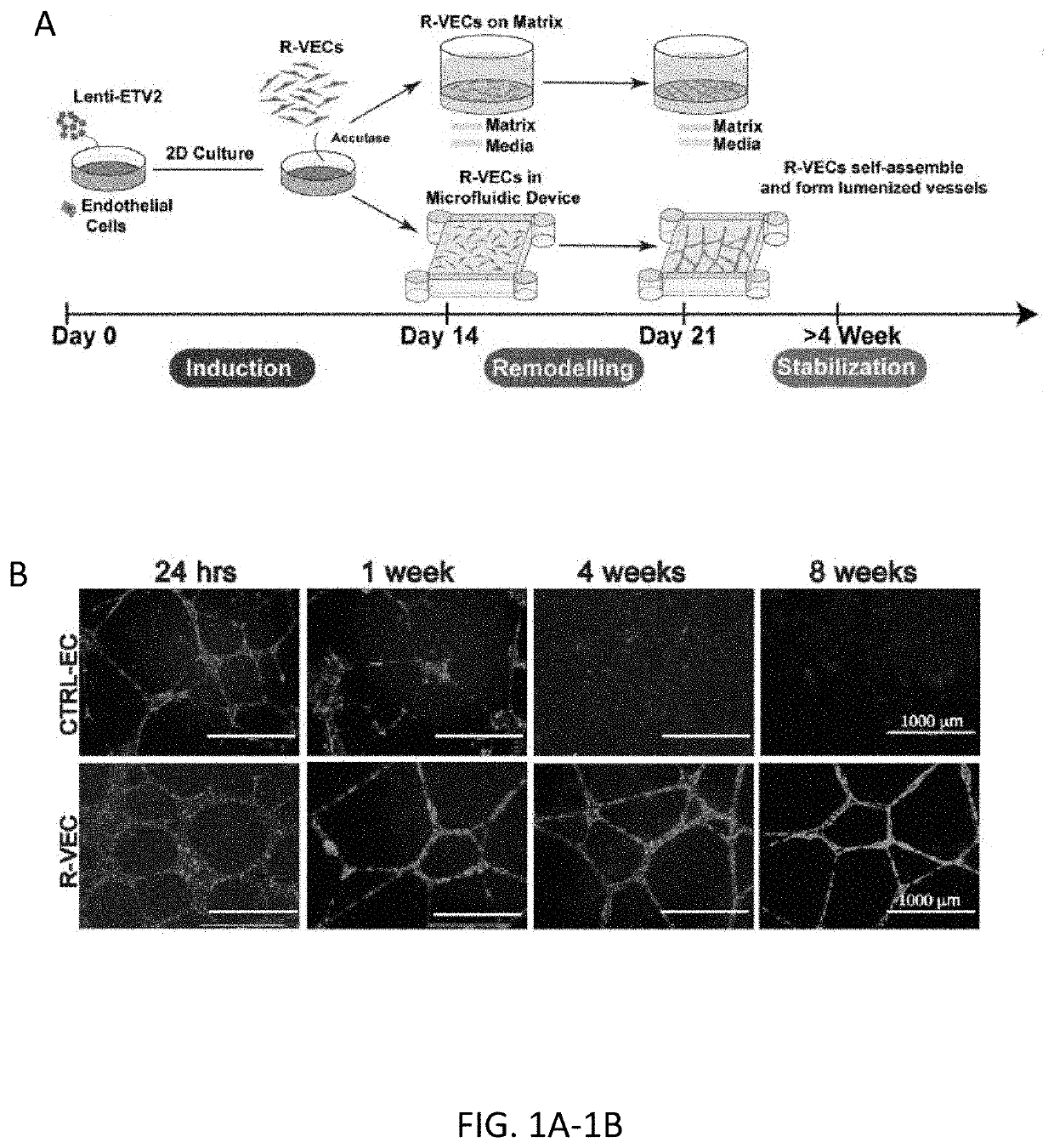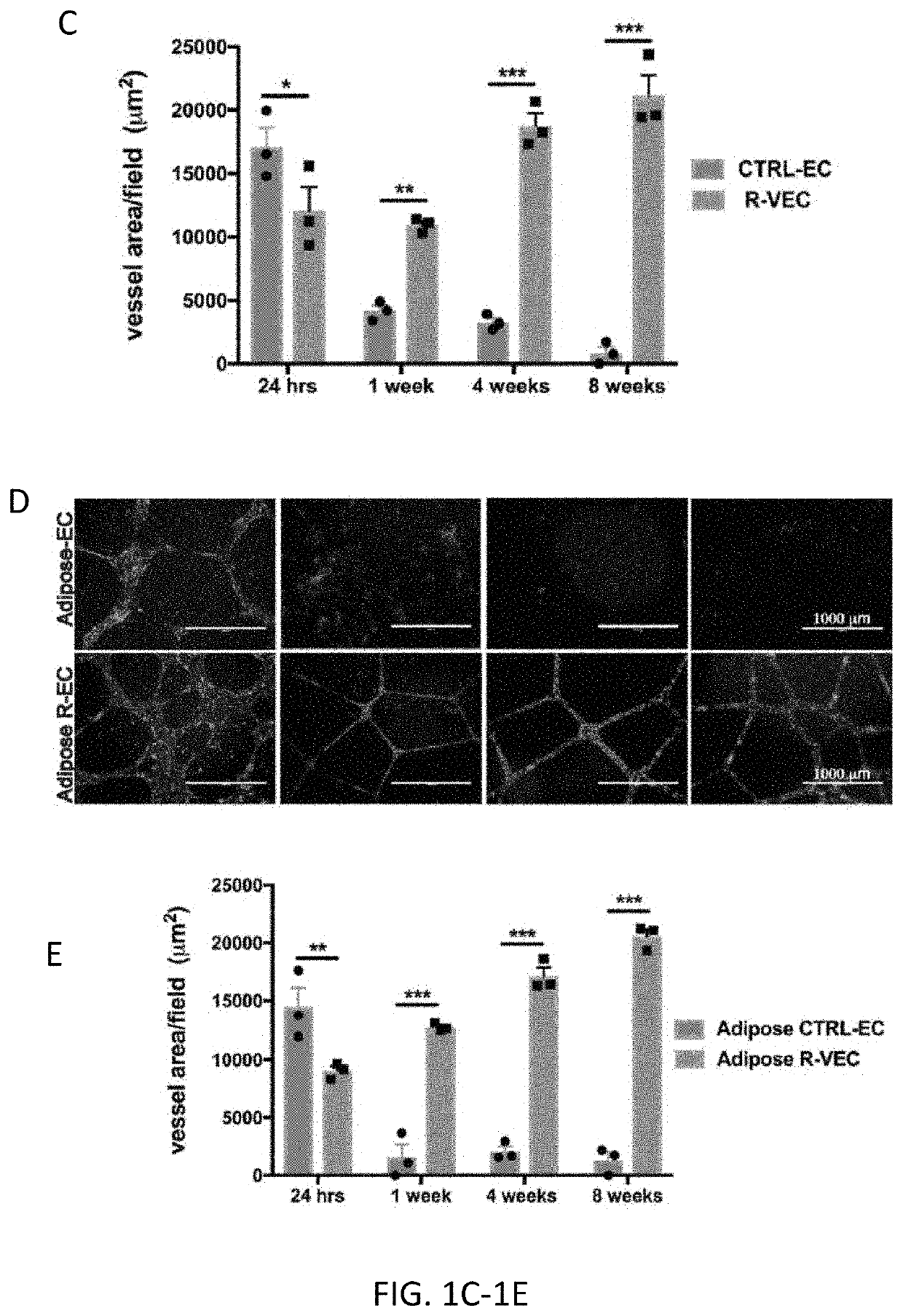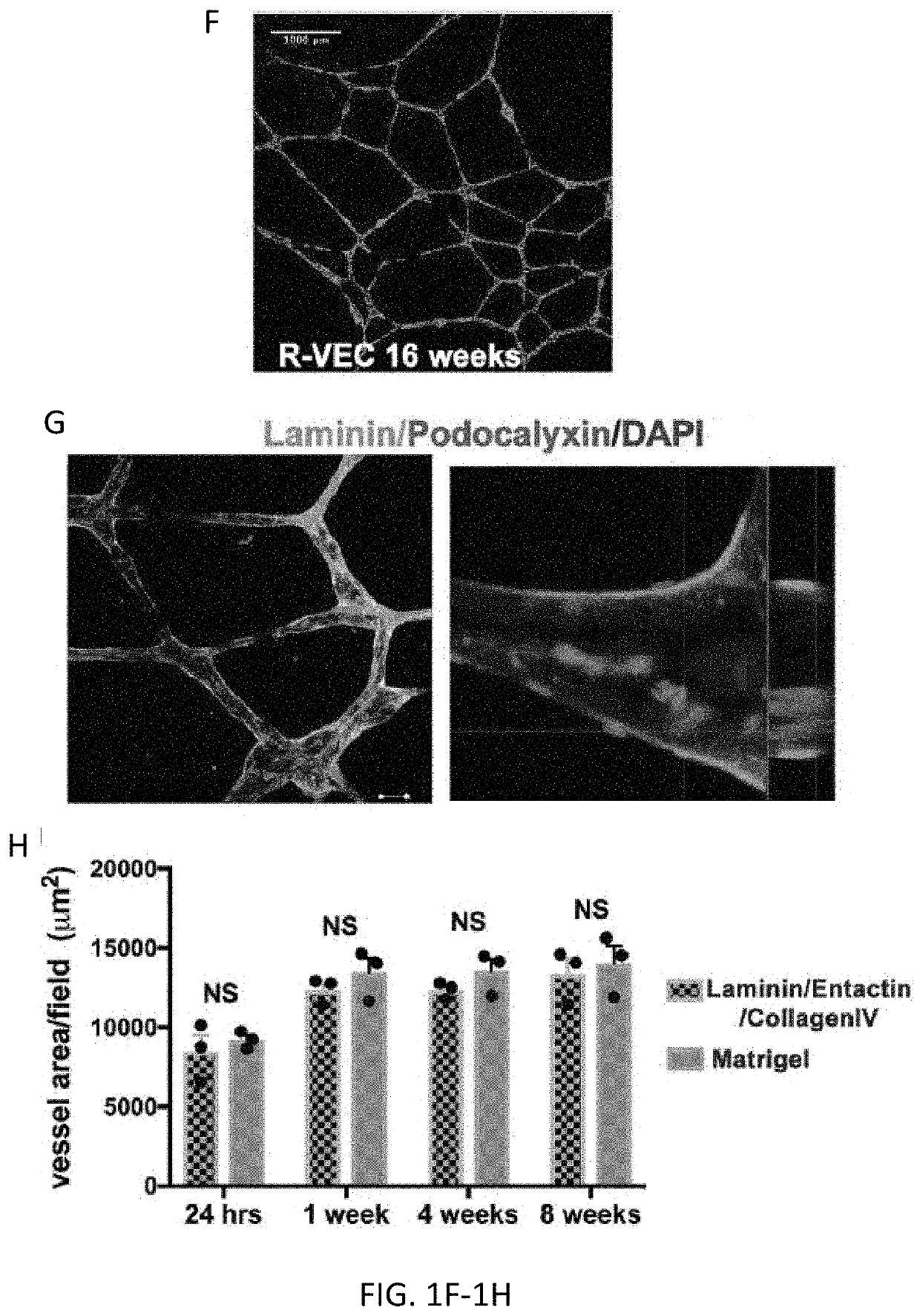Methods of functional vascularization of pancreatic islets and beta-cell organoids
- Summary
- Abstract
- Description
- Claims
- Application Information
AI Technical Summary
Benefits of technology
Problems solved by technology
Method used
Image
Examples
example 1
[0123]Previous reports have studied co-culture of ECs with R cells (Kao D I et al., Stem cell reports;4(2):181-9, (2015); Rutter G A et al., Biochem J;466(2):203-18, (2015); Nikolova G et al., Dev Cell;10(3):397-405, (2006); Lammert E et al., Mech Dev; 120(1):59-64, (2003)). However, these studies used generic adult ECs, and attempts to vascularize purified whole islets in vitro were not successful, with the majority of the β-cells within the islets dying. This suboptimal outcome is likely due to the use of generic mature adult human ECs, which lack the capacity to establish long-lasting islet-specific EC niche. In addition, adult human non-islet ECs lack the potential to arborize or interact with purified human islet cells, to sustain their survival and functionality. This in vitro deficiency of generic ECs could lead to a more profound impaired function of the islets as these adult ECs do not form durable long-lasting vessels that can anastomose to the pre-existing vessels. To gen...
example 2
les Self-Assembly of ECs into Long-Lasting, Stable Patterned Human Vessels In Vitro
[0127]Mature post-natal and adult human ECs organize into nascent vascular networks in Matrigel in vitro or in vivo, yet these vessels are not stable, lack a sustainable large pore lumen in vitro, have limited remodeling potential, and regress within a few days. In addition, organ-on-chip or vascular scaffolding approaches often require separation by layer(s) of semipermeable synthetic biomaterials impairing intimate physical cell-cell interaction between EC and non-vascular cells, thereby impeding cell-contact dependent co-adaptive EC remodeling (Huh, D. et al., Science 328, 1662-1668, (2010); Blundell, C. et al., Lab Chip 16, 3065-3073, (2016)). Moreover, mature naïve ECs fail to self-assemble into extended vascular networks in large perfusion microfluidic chambers, limiting their vascular plexus volume to approximately 2 microliters (Chen, M. B. et al., Nat Protoc 12, 865-880, (2017); Campisi, M. e...
example 3
rm Vessels in a Defined Matrix of Laminin, Entactin, CollagenIV (L.E.C)
[0135]Current approaches for in vitro vascular patterning and organoid formation require the use of a crude preparation of extracellular matrix, such as Matrigel. Matrigel contains numerous digested matrix components rendering it difficult to isolate factors regulating durable vessel formation or their interaction with organoid cellular components. By screening numerous combinations of vascular extracellular matrices, the inventors identified a stoichiometrically defined matrix of Laminin, Entactin, and CollagenIV (L.E.C) that is sufficient for the self-assembly of stable lumenized ETV2-driven vessels similar to those formed when using Matrigel. Notably, control naïve human ECs did not form stable vessel networks on L.E.C. R-VEC vessels generated on both L.E.C and Matrigel showed similar durable vessel area and branching to 8 weeks (FIG. 1H). Electron microscopy revealed that stage 3 R-VECs formed vessels with op...
PUM
| Property | Measurement | Unit |
|---|---|---|
| concentration | aaaaa | aaaaa |
| concentration | aaaaa | aaaaa |
| concentration | aaaaa | aaaaa |
Abstract
Description
Claims
Application Information
 Login to View More
Login to View More - R&D
- Intellectual Property
- Life Sciences
- Materials
- Tech Scout
- Unparalleled Data Quality
- Higher Quality Content
- 60% Fewer Hallucinations
Browse by: Latest US Patents, China's latest patents, Technical Efficacy Thesaurus, Application Domain, Technology Topic, Popular Technical Reports.
© 2025 PatSnap. All rights reserved.Legal|Privacy policy|Modern Slavery Act Transparency Statement|Sitemap|About US| Contact US: help@patsnap.com



